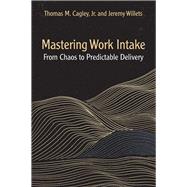Regardless of whether you’ re creating, enhancing, or maintaining software products, work intake is a challenge you deal with constantly. Doing the right work at the right time can make or break your project, and there are surprisingly few resources to show you how to manage this process effectively. You need to know what your team is executing, what work is next, and the skill sets required to do the work.
Mastering Work Intake: From Chaos to Predictable Delivery focuses on the full pipeline that work follows as it enters and exits your organization, including the different types of work that enter at different levels and times. It is a must-read for agile coaches, Scrum Masters, product owners, project and portfolio managers, team members, and anyone who touches the software development process. Mastering work intake involves recognizing that it’ s easy to say “ yes” and much harder to say “ no.”








